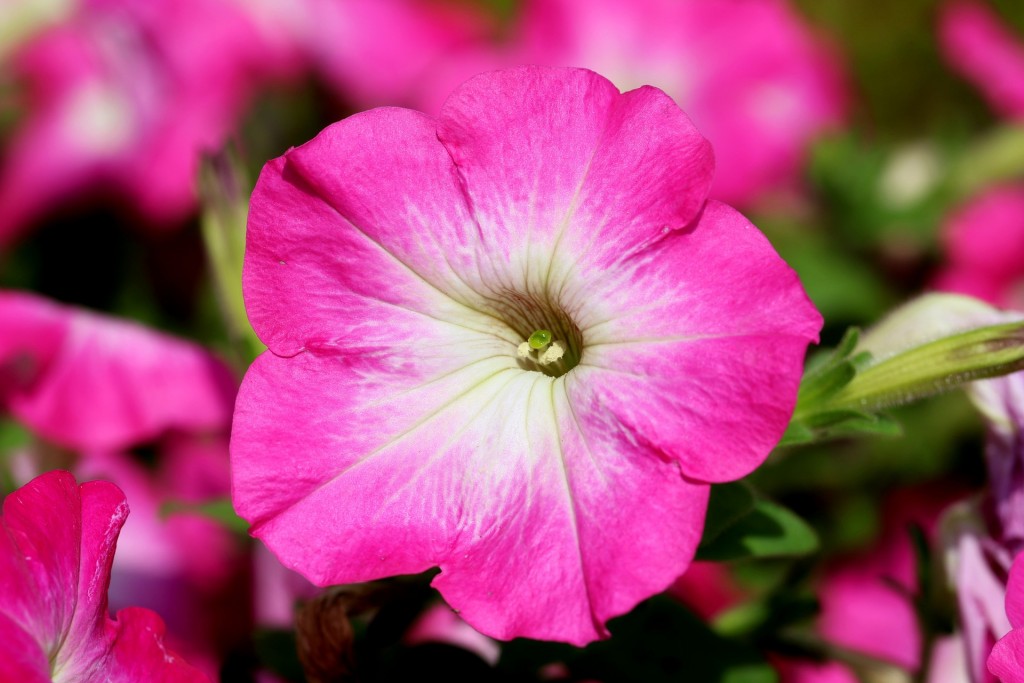
Petunias can offer long-term color for summer gardens and brighten dreary landscapes with their pastels and bright colors. Petunias are one of the most popular garden flowers. Not only are they inexpensive, but taking care of these beautiful flowers is simple and easy. Your garden will be filled with beautiful blooms that can last until autumn with proper care.
Growing Petunias
Petunias grow very slowly from seeds, so it is best to begin at least 10 to 12 weeks before planting. The seeds also need light to germinate. It is best to sprinkle the seeds on top of the soil and lightly pat, but not fully cover them. Before germination, petunias prefer warmer temperatures. However, after germination, they prefer to grow in cooler temperatures. That being said, wait until the danger of frost is past before planting them outdoors because they are not tolerant of frost.
Caring for Petunias
Water
If you want multiple blooms, you should water your petunias regularly. They are tolerant of heat so weekly waterings should be enough unless there is a prolonged period of drought in your area. In general, water should be given enough to soak the soil to about 6 to 8 inches every time you water. “Spreading” types of petunias require more frequent watering. Flowers in hanging baskets also need to be watered more often, sometimes as often as daily, depending on their size and the volume of soil they contain.
Sunlight
The most important requirement for growing petunias successfully is having plenty of light. They can grow in partially shaded locations but will produce fuller and more abundant blooms in full sun. The more shade they receive, the fewer flowers they’ll produce.
Soil
These flowers do not need terribly rich soil to grow well. The only requirement is that it must drain decently. If you want to, soil can be improved with a well-composted organic matter worked into it. The organic matter should be spread to around 2 to 3 inches thick and incorporated into the soil to a depth of 8 to 10 inches. This will not only open up heavy clay soil, which improves drainage but can also increase the ability of light.
Fertilizer
Petunias are heavy “feeders”. While your flowers are blooming, they should be fertilized regularly with a balanced, water-soluble fertilizer. Every 10 to 14 days they should receive a liquid fertilizer. You can also give them a combination of a liquid and a slow-release fertilizer.
Deheading Petunias
Petunias live to reproduce themselves and create blooms to form new seeds. Once the bloom browns and falls off, the plant extends energy creating a seed pod filled with seeds. So why would you dehead them? Clipping off the old bloom and the forming pod makes the plant start the blooming process again. Instead of a stem covered in brown pods, you’ll have a bushy plant with constant blooms throughout the whole season. Deheading is a very simple job. You clip off the bottom of the bloom once they turn brown and cut the stems directly above the next set of leaves. Pinch them off with a thumbnail or by using a pair of garden shears.
Looking for some new and interesting petunias for your garden? Check out ColorBlitz!
This is a powerful new medium petunia series with the color and uniformity you need. Impressive bi-colors, star patterns and vibrant hues, all with end-user performance.